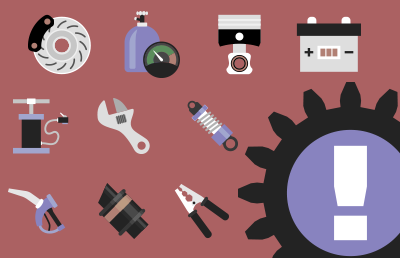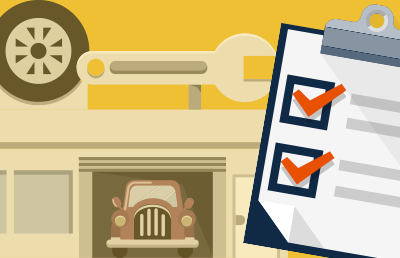Investing in a bucket truck requires serious committment. Not only do you have the responsibility of lifting people high into the air, boom trucks require regular maintenance if you want to extend its life.
Keeping your truck safe on the road and in tip-top condition can save you a lot of money in the longrun. The good thing is there are plenty of things you can do to maintain your boom truck.
First Things First
The cost of a solid preventative maintenance program easily pays for itself over the long run.
Another prudent exercise is to figure out exactly how much your boom truck earns for you in a day. Keep this figure in mind so you’ll know just how much downtime will cost you should your truck wind up in the repair shop for a time-consuming fix. Maintaining your boom truck will also provide a boost to safety, which is obviously the most important reason for inspecting your truck and keeping it in good (and safe) operating condition.
By following the tips below, you’ll keep your boom truck on the road for a long time, which means your equipment will keep helping you deliver completed jobs and put food on the table for as long as possible.

Pay Attention to Manufacturer Recommendations
Greasing your truck on a weekly basis isn’t just a good idea, it’s mandatory. There’s so many parts of your boom truck that need to be oiled, so having a plan to stay on top of a schedule will keep you on the road and finishing jobs. The following are basic recommended intervals for when you should swap out liquids for various parts of your truck (it might vary based on your manufacturer):
- Engine Oil: 250 hours
- Automatic Transmission: 500 hours
- Standard Transmission: 1,000 hours
- Rear Differentials: 600 hours
- Power Steering: 1,000 hours
- Antifreeze: 1,000 hours
- Hydraulic Oil: 1,000 hours
Phew! That’s quite a list, but trust me, it’s worth setting alerts on your mobile phone to remind you when it’s time to perform that quick change. It’ll pay off in the long run.
There’s an Add-On for That
There are actually plenty of small, inexpensive items that you can put on your truck to extend the life of some of its components. For example, did you know that you can add oil coolers to your boom truck’s hydraulic system, automatic transmission, and steering system? Believe it or not, these simple add-ons can double or even triple the life expectancy of some of your components.
Train Your Driver
Whether you’re a one-person shop or you have a fleet, make sure the driver of each boom truck (be it you or an employee) is trained to watch the gauges. It’s critical that any problem that may be indicated while the truck is moving be communicated to your regular mechanic. Here’s an example of how ignoring a cheap fix can wind up damaging your bottom-line way more than it should:
Let’s say the seal is leaking on your boom truck’s hydraulic pump (I hate when that happens). The leak in the seal can quickly be identified during maintenance and easily changed within a couple of days.
The only costs you’d be on the hook for would be the hydraulic pump seal (about $40) and the cost of labor. A quick estimate of the labor (remove the pump, replace the seal, reinstall the pump) reveals that it’s about a three to four hour job. Let’s assume four hours of labor at $65, and the total cost for parts and labor comes in right around $300.
What’s the cost if you just let the seal continue to leak without replacement? Now things get scary. Not only would your pump wind up burning up due to lack of oil (replacement cost, $600), but you’d also be burning through oil like a mad-person. Maybe the pump fails at the most inconvenient time, say during a job, with a fully loaded truck, or when business is already backed up. We’re talking a cost, at minimum, of over $1,000 - for what should have been an easy fix.

Timing is Key
So how do you know when something is going wrong with your boom truck? Well, routine inspections are key. The same driver who should be watching your gauges can also perform these inspections. Prior to beginning his or her shift, make your driver inspect the truck for defects that may happen at daily or monthly intervals. Recommendations to ensure your aerial equipment will operate safer and longer can be found within the regulations of OSHA (Occupational Safety and Health Administration) as well as the Federal Motor Carrier Safety Administration.
Of course, your driver isn’t likely a boom truck maintenance expert, and if he is, then you aren’t paying him enough. Getting periodic professional testing and inspection is the tipping point to avoiding huge costs or watching your boom truck turn into a very expensive, shiny brick. How often you get your truck inspected depends on the truck’s activity and environment, among other aspects. These inspections need to be performed by qualified personnel who have a complete understanding of your aerial equipment and should be performed monthly (or annually at absolute worst).
It’s Up to You
Ultimately, the responsibility falls on you to ensure your staff members are educated and do all they can to keep each other safe and keep your trucks on the road. Figure out how to contact the manufacturer of your boom truck to find out both what you’re required to do and what you should be doing. Share this info with your staff and establish an inspection protocol for your fleet.
Anyone will agree that the need to maximize revenue and operations results in the need to become more efficient in how you use and maintain your equipment. You have to work your equipment to its maximum on a continual basis, to the point of abusing and overextending its capabilities. Extending the life of your heavy equipment is important for any small business owner, so it only makes sense to make sure you’re complying with some sort of maintenance schedule.